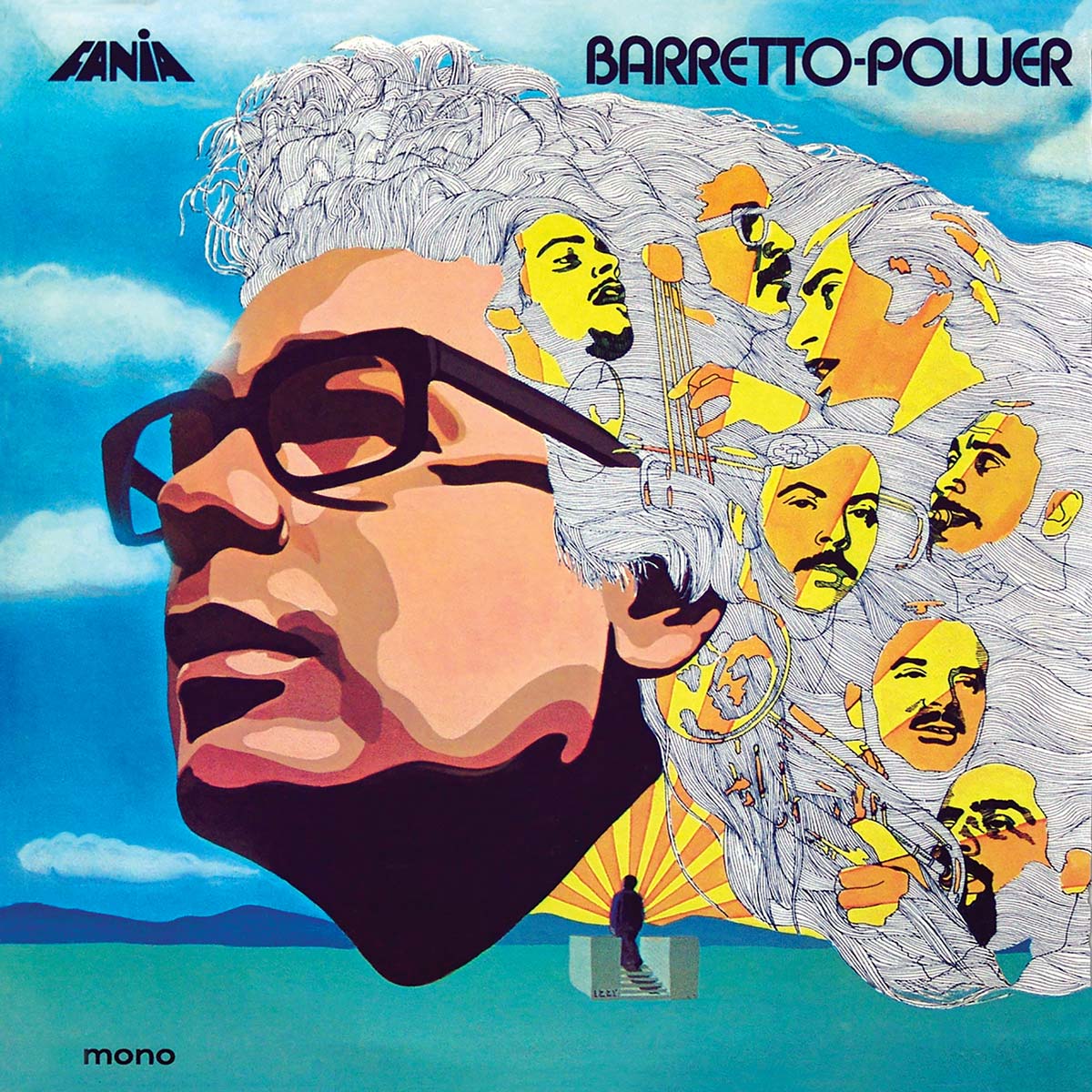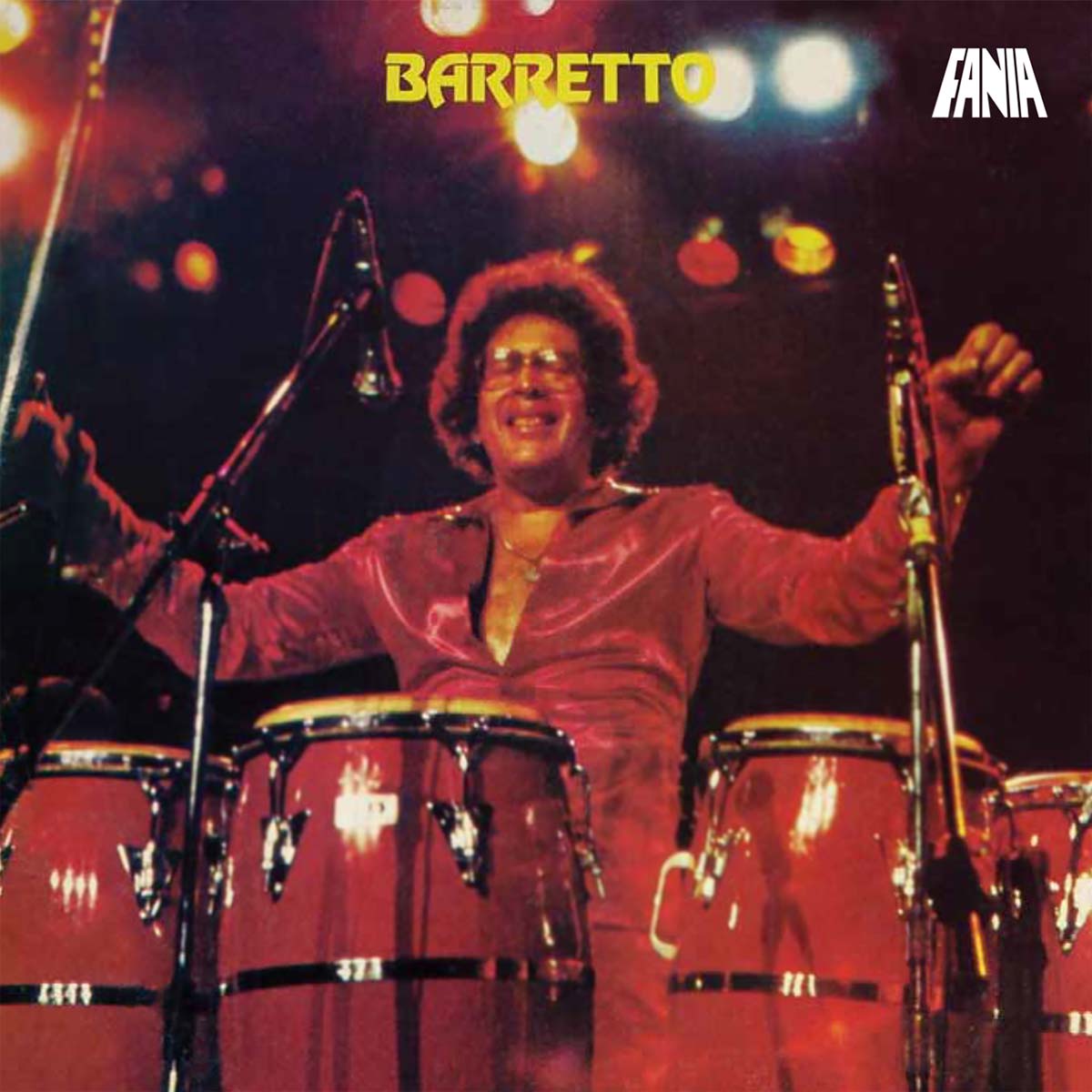
Ray Barretto’s career has been a long and varied journey. Born in Brooklyn on April 29, 1929, he is the quintessential Nuyorican, a Puerto Rican born and raised in New York City. By the age of two, his family had moved to Manhattan’s Spanish Harlem and by seven, the South Bronx.
Barretto’s bi-cultural experience was reinforced during his stint as a private in the Army during the late 1940’s. “Hangin’ with the black GI’s [in Germany] and hearing the new progressive jazz that was happening then, be-bop, well, I was home.” Being exposed to Dizzy Gillespie’s collaborations with Cuban conguero Chano Pozo further solidified that feeling and inspired him to begin learning the musical intricacies of the conga drum. Barretto led a successful career as a sideman on jazz recordings with leaders like José Curbelo and Tito Puente. He then had success leading a charanga-style ensemble (a Cuban dance band that uses flute and violins) producing a highly successful crossover hit, El Watusi.
But Ray was ready for a change. He formed a conjunto, a small Cuban-style dance band, with two trumpets and a rhythm section. “Jerry Masucci of Fania sought me out and the time was right. The title, Acid, was his idea.” By 1966 a new sound had appeared on the New York dance music scene—Latin Boogaloo. A unique combination of son montuno, cha-cha-cha and R&B, this new sound was put down by many established bandleaders and purists, but Barretto embraced it. “I had been Black for a long time besides being Puerto Rican. It was part of growing up in New York.” And so the album opens with the funky, hard-driving son montuno titled El Nuevo Barretto. Listen closely to the opening break/trumpet phrase. Carlos Santana would recycle it later in his version of Tito Puente’s Oye Como Va. On Mercy, Mercy, Baby, vocalist and fellow Nuyorican Pete Bonet, easily riffs in English, reflecting the influence African-American culture has had on the New York-Puerto Rican experience.
One of the gems on this recording is the title tune, Acid. It’s simple, funky bass tumbao (a repetitive, rhythmic pattern) is played by the late great, legendary Cuban-American bassist, Bobby Rodriguez, who Barretto affectionately dubbed, “Big Daddy.” The result, recorded in one take, is a tour de force that combines a jazz aesthetic with the drive of Afro-Cuban rhythm. René Lopez’s solo on muted trumpet is equal parts Miles Davis and Dizzy Gillespie, with some funky Cuban shadings and his own Nuyorican attitude. Cuban, timbalero Orestes Vilato, a carry over from Barretto’s charanga, had been with Cuban flute virtuoso José Fajardo’s charanga where he was never featured as a soloist. That completely changed on Acid and Soul Drummers, thus inspiring a new generation of young percussionists. Fellow Cuban trumpeter Roberto Rodriguez plays a soaring lead solo. “Roberto holds a special place in my heart. He held a day job as a manager of an auto mechanic shop and never missed a gig or rehearsal with me and he always played his butt off.
He was a man’s man”. Barretto follows and starts with a quiet open roll that comes out of nowhere and builds to a climax of explosive slaps. The power and energy that he generates exudes exclamations of affirmation from his fellow band-mates. A final piano montuno by Louis Cruz with some final explosive trumpet work by Rodriguez while Lopez plays a tasty moña (a short improvised mambo line) underneath him closes the tune. A Deeper Shade of Soul, Teacher of Love and Soul Drummers, Teacher of Love and Soul Drummers continue in the boogaloo groove. Sola te Dejaréis a straight up, swinging mambo/guaracha about an egotistical woman who winds up alone. It’s a showcase for vocalist Adalberto Santiago’s talents as a sonero (vocal improviser). The closer on the album is the other gem, Espíritu Libre. It opens with a percussive dialogue between Orestes playing mallets on the timbales and Barretto on congas. A haunting melody is stated by Lopez, then mirrored by Rodriguez on muted trumpet. Big Daddy enters with a bass line in 6/8 meter accompanied by Santiago unwavering on a small bell. While Bonet strikes a jawbone, Barretto and Vilato converse over the West African-rooted rhythm known as bembé . Featured soloist Lopez uses some nice special effects and pianist Louis Cruz adds some unexpectedly eerie blues phrases as the intensity builds and finally comes to an abrupt halt. A recapitulation of the haunting melody of these two trumpets closes the piece and ends this journey to Africa. “Jazz is always at the core of what I do musically,” Barretto always said.
As the most recorded hand percussionist in jazz history, and a leading force in salsa, this indeed is the case. In the New York/Puerto Rican experience, this duality is the norm, not the exception. From the early Latinos in New Orleans who participated in jazz’s birth, to Nuyoricans like maestro Barretto, this rich musical journey continues. Welcome to part of that journey— Barretto’s debut album for Fania, Acid.
PERSONNEL: Ray Barretto – musical director, congas Roberto Rodriguez – trumpet René Lopez – trumpet Orestes Vilato – timbales Louis Crúz- piano Bobby “Big Daddy” Rodriguez – Ampeg baby bass Adalberto Santiago – Spanish lead vocals, clave on Acid, maracas on Sola Te Dejaré, cha–cha bell on Espíritu Libre, tambourine and cencerro (bongó bell) on El Nuevo Barretto Pete Bonet – English vocals, guiro, quijada de burro (jaw of a donkey) on Espíritu Libre Background vocals: Jimmy Sabater and Willie Torres on Mercy, Mercy, Baby – Soul Drummers – Teacher of Love Adalberto Santiago and Pete Bonet on first part of El Nuevo Barretto, Pete Bonet and Ray Barretto on the last half of the tune. Pete Bonet , Willie Torres and Jimmy Sabater on Sola Te Dejaré This album was recorded in real time with no overdubs. Arrangements: Gil Lopez – Sola Te Dejaré concepts for all other arrangements by Ray Barretto Recorded at RCA studios, 1967 Produced by Harvey Averne Executive Producer – Jerry Masucci Photos by Marty Topp Album cover design by Izzy Sanabria
Written by Bobby Sanabria










